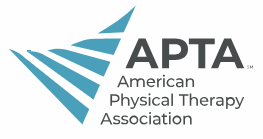APTA Annual Conference Abstracts
PT 2012: The Annual Conference and Exposition of the APTA, June 6 - 9, 2012
Shining New Light on Physical Therapy Equipment: Effectiveness of UV Light in Comparison to Detergent in the Reduction of Bacteria
1106-RR
SHINING NEW LIGHT ON PHYSICAL THERAPY EQUIPMENT: EFFECTIVENESS OF UV LIGHT IN COMPARISON TO DETERGENT IN THE REDUCTION OF BACTERIA
Shanelle Bowen
1, Matthew Burke
1, Pamela Robinson
*1, Mary Beth Downs
1, Boakai K. Robertson
2, Cindy LaPorte
1
1. Physical Therapy, Alabama State University; 2. Biological Sciences, Alabama State University
PURPOSE: This experiment was designed to compare the effectiveness of detergent treatment and ultraviolet-C (UV-C) irradiation from a hand-held wand for disinfection of porous and non-porous physical therapy assistive devices. The proposed hypothesis was that UV-C will be as or more effective than detergent in the reduction of bacteria.
BACKGROUNDS/SIGNIFICANCE: Using proper disinfecting techniques in the health care field is important in preventing noscomial infections. Considering that physical therapy equipment is used for multiple patients, disinfection between patients is of critical importance. Numerous articles exist in the literature relating to the effects of various detergents on the reduction of bacteria, but there is limited data concerning treatments other than those used as standard protocols in acute rehabilitation facilities. Studies have shown that UV-C light is bactericidal and can damage bacterial DNA, thus inhibiting replication. This has led to the development of UV-C devices for disinfection. One of the newer products is the hand-held UV-C wand. Many physical therapy facilities routinely use chemical disinfectants and some use large UV-C decontamination units, but we have found no literature on the use of hand-held UV-C wands for decontamination purposes in physical therapy clinics. The ease of use of hand-held UV-C wands would make it desirable for use not only in clinics but also for other health care settings inclusive of home health. This study seeks to discover whether UV-C light is as or more effective than a common quaternary ammonium compound detergent when used to decontaminate both porous and non-porous equipment commonly used in physical therapy facilities.
SUBJECTS: Not applicable
METHODS AND MATERIALS: Gait belts and wheelchair seats were intentionally contaminated with both Staphylococcus aureus and Esherichia coli and allowed to incubate for twenty-four hours in a controlled environment. To collect samples, six apertures were demarcated on a premeasured grid to standardize the areas where initial and final samples would be collected in delineated UV-C- and detergent-treated areas. Following the product protocol, a UV-C wand and a quaternary ammonium compound detergent were used to treat adjacent areas. In order to eliminate the chances of disinfection overlap, the UV-C side received treatment prior to the detergent side, which was shielded with aluminum foil and 4x4 sterile gauze pads. Samples were collected before and after treatment application and were delivered on the same day to the Alabama State University Microbiology lab for plating, growth and colony counts.
ANALYSES: Because the data did not appear to have a normal distribution, nonparametric statistical tests were used for analysis. The Wilcoxon Signed Rank Test (N=9, α=0.05) was used to establish whether there is a significant difference between the initial and final samples from the UV-C-treated and the detergent-treated areas. The Mann-Whitney Test (N=9, α=0.05) was used to establish whether there was a significant difference between the UV-C and detergent treatments.
RESULTS: We found no significant difference between initial and final treatment methods in either detergent (R=11.5, W[0.05]=9, W[0.95]=36) or UV-C (R=20, W[0.05]=9, W[0.95]=36) treated areas of the gait belt. There was also no significant difference between use of UV-C or detergent on the gait belt (T=38, W[0.05]=22, W[0.95]=59). No significant difference was seen in the initial and final samples from the detergent-treated areas of the wheelchair seat (R=19, W[0.05]=9, W[0.95]=36). However, a highly significant difference was found between initial and final samples from UV-C treated areas on the wheelchair seat (R=0, W[0.005]=2, W[0.995]=43). There was a significant difference between UV-C and detergent treatment on the wheelchair seat (T=62, W[0.05]=19, W[0.95]=62).
CONCLUSIONS: Although this is a small study with a limited sample size, the hand-held UV-C wand appears to be as or more effective than a quaternary ammonium compound detergent when disinfecting non-porous material. Neither method consistently disinfected porous surfaces. For cleaning equipment with non-porous surfaces, the hand-held UV-C wand may be a better choice due to its ease of use, effectiveness and environmentally safe properties.
FUNDING SOURCE: Alabama State University Department of Physical Therapy
KEYWORDS: ultraviolent, disinfection, detergent
Copyright 2011 by the American
Physical Therapy Association. Requests for reprints should be directed to
the corresponding author of the article. Educators, students, and other
academic customers may receive permission to reprint copyrighted material
from Physical Therapy (ISSN 1538-6724) by contacting the
Copyright Clearance Center Inc, 222 Rosewood Dr, Danvers, MA 01923. Other
types of customers who want permission to reprint should contact the APTA
Editorial Office, Attn: Physical Therapy.
*First author



